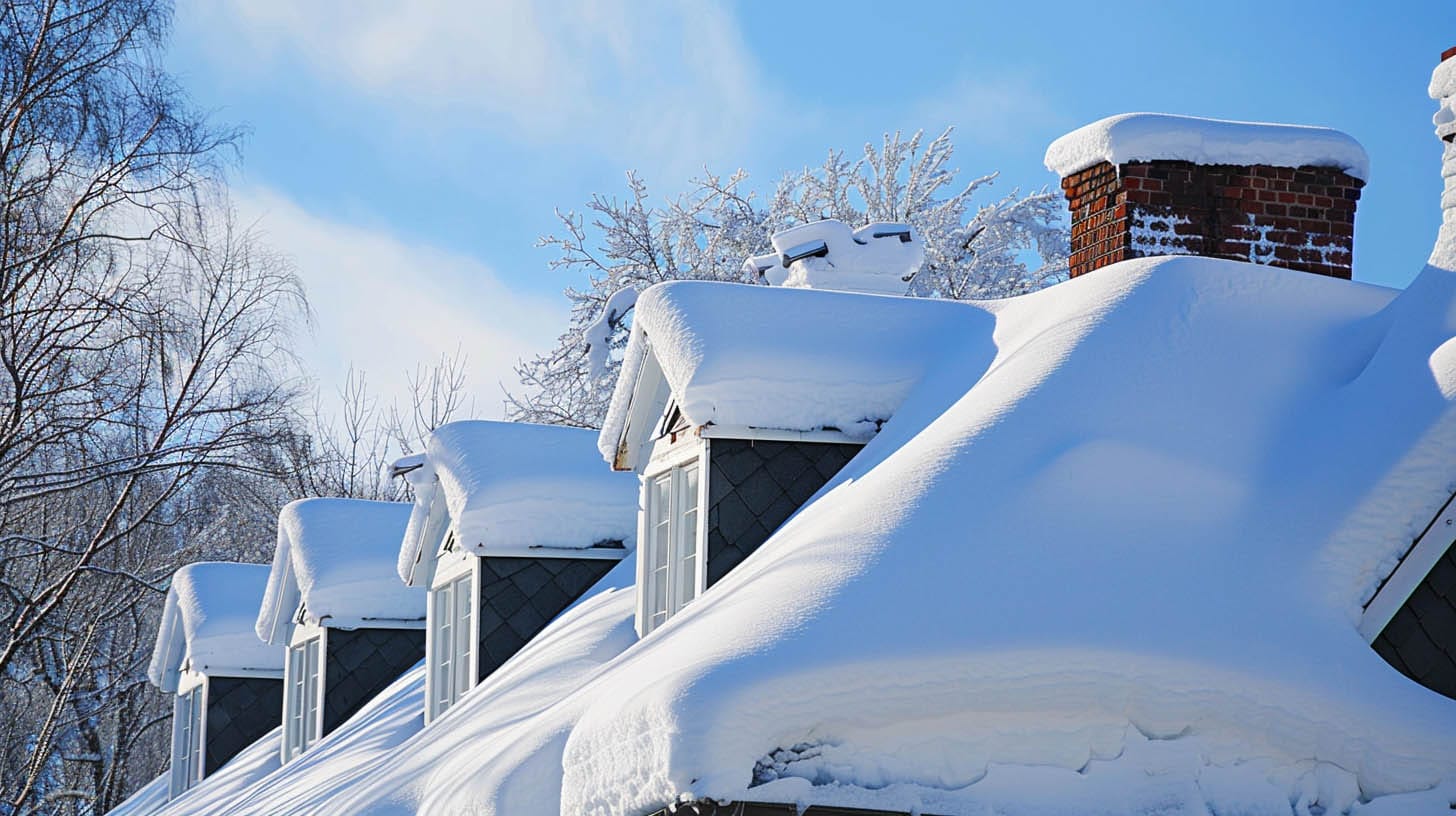
Winter brings a picturesque blanket of snow that covers the landscape, transforming our homes into winter wonderlands. However, the beauty of snow can sometimes mask potential dangers, especially when it accumulates on the roofs of our homes. Understanding the risks and knowing how to mitigate them is crucial for maintaining the safety and integrity of our properties.
The appearance of water stains on ceilings or walls is a clear indicator that your roof may be compromised. Typically, roofs nearing or beyond two decades in age are more prone to such issues due to the deterioration of shingles and protective layers. This deterioration makes roofs more susceptible to water damage following snowstorms. Snow accumulation, particularly on roofs with insufficient pitch, can lead to ice formation and the creation of ice dams at the eaves. As snow melts, water can infiltrate your home through various vulnerabilities, such as lifted shingles, nail holes, or damaged flashing.
To prevent extensive damage, it’s advisable to conduct regular inspections, especially in easily accessible attics. Signs of leaks, such as water dripping along structural supports or pooling on the attic floor, should prompt immediate action. Addressing water spots promptly can avert further complications, including mold or structural damage, thereby safeguarding your home and finances.
The weight of accumulated snow on a roof should never be underestimated. The stress exerted by heavy snowfall can strain even the sturdiest roofs, particularly older ones that may already show signs of sagging or deterioration. In extreme cases, the excessive weight can lead to roof collapse, posing a significant risk to the safety of occupants and the structural integrity of the home. It is essential to monitor your roof for any signs of distress and seek professional assessment at the first indication of potential structural issues.
A uniformly snow-covered roof is generally not a cause for alarm. However, patches of melted snow can reveal areas where heat is escaping from your home. This phenomenon, often resulting from inadequate attic insulation, missing shingles, deteriorated decking, or compromised seals around chimneys and vents, not only increases energy bills but also indicates potential vulnerabilities in your roofing system. Addressing these issues promptly can enhance energy efficiency and prevent further damage to your roof.
Regular inspections by a professional roofing company, such as Teflon Roofing located in Chambersburg PA, are paramount in identifying and addressing potential issues before they escalate. A thorough evaluation can uncover hidden damage, provide insights into the condition of your roof, and recommend necessary repairs or improvements. Proactive measures, including timely repairs and enhancements to insulation and ventilation, can significantly extend the life of your roof and ensure the safety and comfort of your home throughout the winter season.
In conclusion, while snow-covered roofs can add to the winter charm, it’s vital to remain vigilant about the potential risks and take proactive steps to ensure your home remains safe and secure. Regular inspections, prompt repairs, and attention to insulation and ventilation can mitigate the dangers posed by snow accumulation, safeguarding your property against water damage, structural issues, and heat loss.
Chambersburg, PA 17201
Open: 24/7
Contact Us Today
Copyright © Teflon Roofing